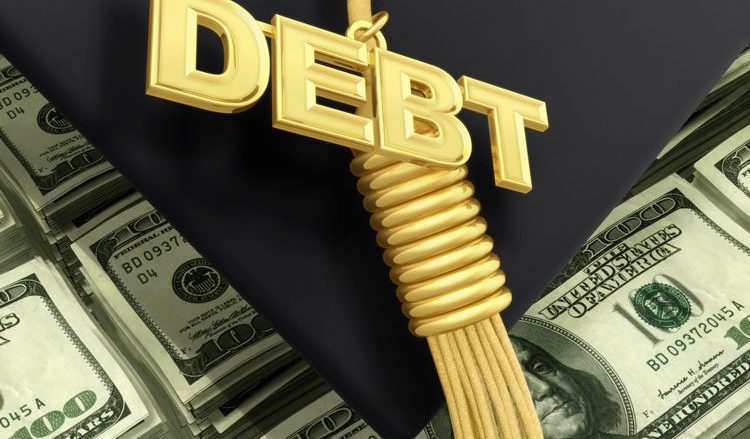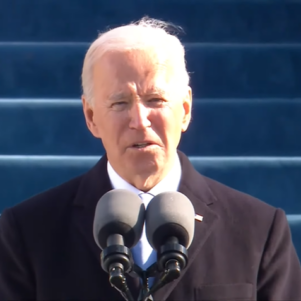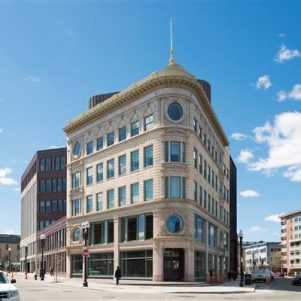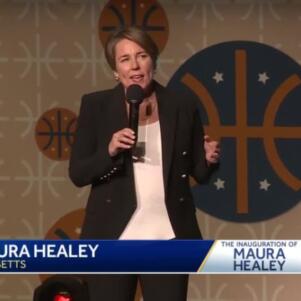Student Loans Now Part of Victimhood Culture
By James P. Freeman | April 18, 2017, 11:40 EDT

It must be difficult for students today… constantly deflecting laser-like “micro-aggressions” from minor affronts, constantly seeking “safe spaces” from scary ideas, and constantly anticipating “trigger-warnings” from insensitive academia. No doubt, all victims of a culture of cruelty. And now students and relatives must be vigilant for the newest neighbor moving into the inclusive victimhood: student loans.
Tom Lindsay, contributor to forbes.com, makes the case in a piece titled, “The Latest — And Surprising — Victims of the Student-Loan Debt Crisis: Older Americans.” Lindsay cites a report recently issued by the Consumer Financial Protection Bureau. The report finds that the number of those ages 60 and older with student loan debt has “quadrupled over the last decade in the United States, and the average amount they owe has also dramatically increased.” Approximately 2.8 million of these borrowers owe $66.7 billion in student loans. Unsurprisingly, “73 percent of student loan borrowers age 60 and older report that their student debt is owed for a child’s and/or grandchild’s education,” with the remaining 27 percent financing either their own or their spouse’s education.
This “increased burden,” writes Lindsay, has “caused” these older Americans to use savings originally intended to be used during their retirement years to pay for the loans. He also reasons that the financial damage “suffered” by older Americans as a result of “tuition hyperinflation demonstrates the enormity of the student-loan crisis.”
Of course, Lindsay’s thesis is preposterous. He ignores the simple notion that these older Americans chose to take out these loans, and that older Americans comprise the wealthiest demographic group in America, as measured by median net worth. And the amount of student loan debt owed by these Americans is a fraction of the total outstanding student loan debt. So today, victimhood status is conferred upon even the wealthiest among us.
Forbes is not alone, however, in identifying victims. Last December, cnbc.com issued warning flags with “The Next Victims of the Student Loan Crisis: Mom and Dad.” And in May 2014, huffingtonpost.com ran a piece, “How to Save the Victims of the Student Loan Crisis.” (Such stories diminish those with legitimate claims of intentional fraud and other legal violations.)
Consequently, millions of students today — whose parents or grandparents do not, will not, or cannot take out loans on their behalf — are being described as victims because they are supposedly coerced into borrowing huge sums by an unforgiving lending hegemony to pay for what should now be a low-cost entitlement, the education experience. Forget that a vast number of them made poor choices in the grim exercise of free will: choosing to attend far too expensive colleges and choosing to borrow far too much money to pay for them.
Outstanding student loan debt now exceeds outstanding credit card debt. According to a recent analysis by the Consumer Federation of America (CFA), based upon data released by the U.S. Department of Education, 42.4 million Americans owe $1.3 trillion in federal student loans (excluding borrowing through private student loans, home equity loans, and credit cards as a means to finance education). As of December 31, 2016, a total of $137.4 billion in balances were in default, a 14% increase from 2015. There are 3,000 new student loan defaults each day; 1.1 million borrowers defaulted just in 2016. They join the ranks of 4.2 million now in default.
Rohit Chopra, Senior Fellow at the Consumer Federation of America, said, “Our broken system works well for the student loan industry, but is failing borrowers, taxpayers, and our economy.”
Chopra fails to disclose that the federal government essentially is the “student loan industry,” since it effectively nationalized the lending market seven years ago, and politicized it. (Much federal loan program funding is rolled up in the federal Affordable Care Act.) Prior to 2010, “vulnerable” student borrowers were victims-in-advance of unscrupulous bankers who dared profiting from the risks of lending. So, with gorgeous irony, The Huffington Post in 2013 reported: “Obama Student Loan Policy Reaping $51 Billion Profit.”
In his fine explanation of the “student loan mess,” Noah Smith, for Bloomberg.com, contends that “when the government owns student loans, it has every incentive not to fix the country’s student-debt problem.” But Smith peppers his commentary with the tone of victimhood. Millennials are “scarred” by the financial crisis of 2008-2009; they are that “unlucky generation”; their victim status is cemented by the “capricious power of the business cycle [leaving] them with fewer jobs and lower wages even as they were saddled with record amounts of debt. It’s no wonder that delinquency rates on student loans have soared.” So, students are excused for unbridling the reins of personal responsibility.
And there will surely be more victims now that the Trump Administration is rolling back protections for people in default on student loans. But changes are expected, according to usnews.com. These changes might include: capping or rolling back certain graduate loans, reforming income-driven repayment plans, and changing Public Service Loan Forgiveness.
On the WGBH program Greater Boston, in a segment about student loan debt, host Jim Braude asked his guests, “the government… they’re part of the problem sometimes, aren’t they… I mean the federal government?” Gabrielle King Morse, Massachusetts director of the non-profit UAspire, responded, “it is true that banks actually have more regulation… than the federal government… so you’re right.” The government even makes financial award letters difficult for “highly educated” people to understand.
Federally owned student debt rose from zero in the early 1990s, to $100 billion prior to The Great Recession, to approximately $850 billion in 2014, to $1.3 trillion today; student debt now comprises 45 percent of federally owned financial assets. This is another example of how massive progressive engineering (replacing market-driven private enterprise with cumbersome central public control) has made something undoubtedly worse and unduly complex. The real victims here are those still believing in the efficacy of progressive philosophy.
James P. Freeman is a New England-based writer and former columnist with The Cape Cod Times











